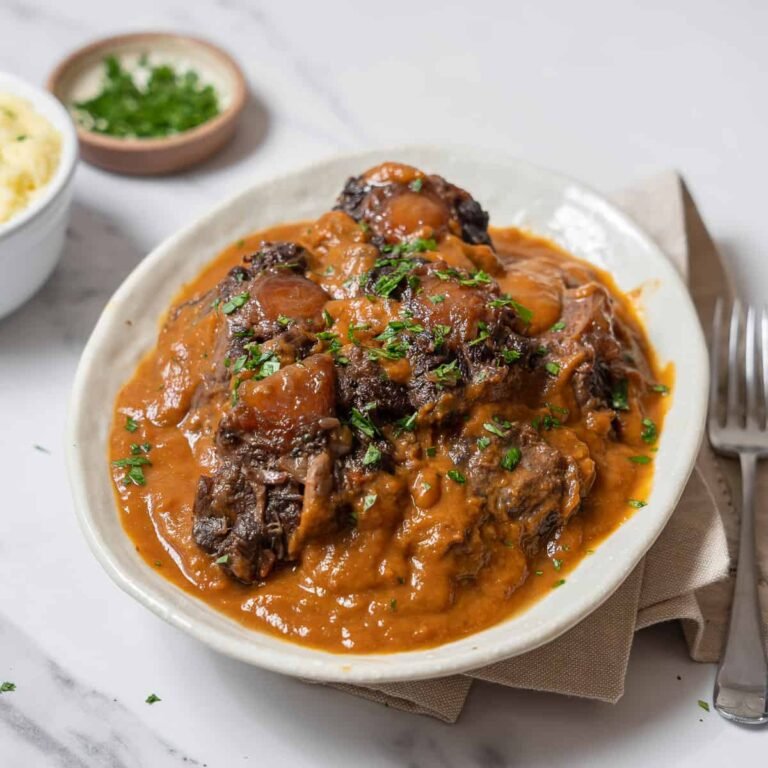
[ad_1]
One of the most delicious cold-weather dishes in Spain is bull tail stew, or rabo de toro. This Spanish recipe is a classic dish served in restaurants throughout the country. My mother-in-law’s traditional recipe will show you how to replicate this mouthwatering dish at home!
If you love comforting soups and stews, make sure to try these recipes for Spanish beef stew and Catalan beef stew.
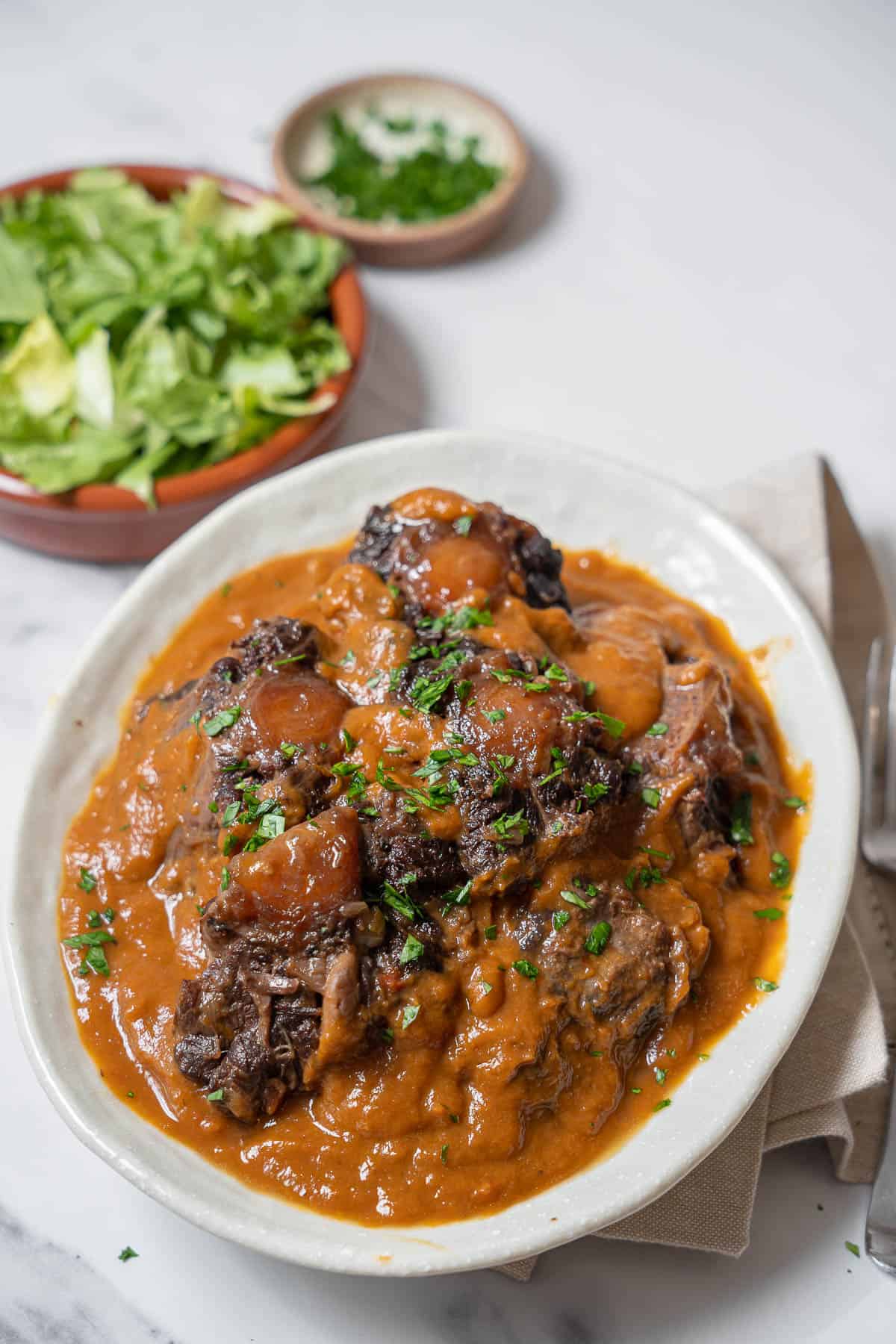
Jump to:
Introduction
Braised bull tail, oxtail stew, rabo de toro, braised oxtail…this famous Spanish dish goes by many names. I first tried this dish in Cordoba, where rabo de toro is one of the city’s most famous dishes. The melt-in-your-mouth meat was covered with thick brown gravy, and next to it was a golden heap of french fries. I was hooked on this comforting stew with the first bite!
Later, I learned my mother-in-law, Antonia, has a great recipe for this stew. Her rabo de toro recipe changes slightly each time, depending on the wine she might have open, and sometimes she’ll add pearl onions to the dish as well (a great idea!). But I’ve decided to share her classic version, which has kept me warm on many occasions.
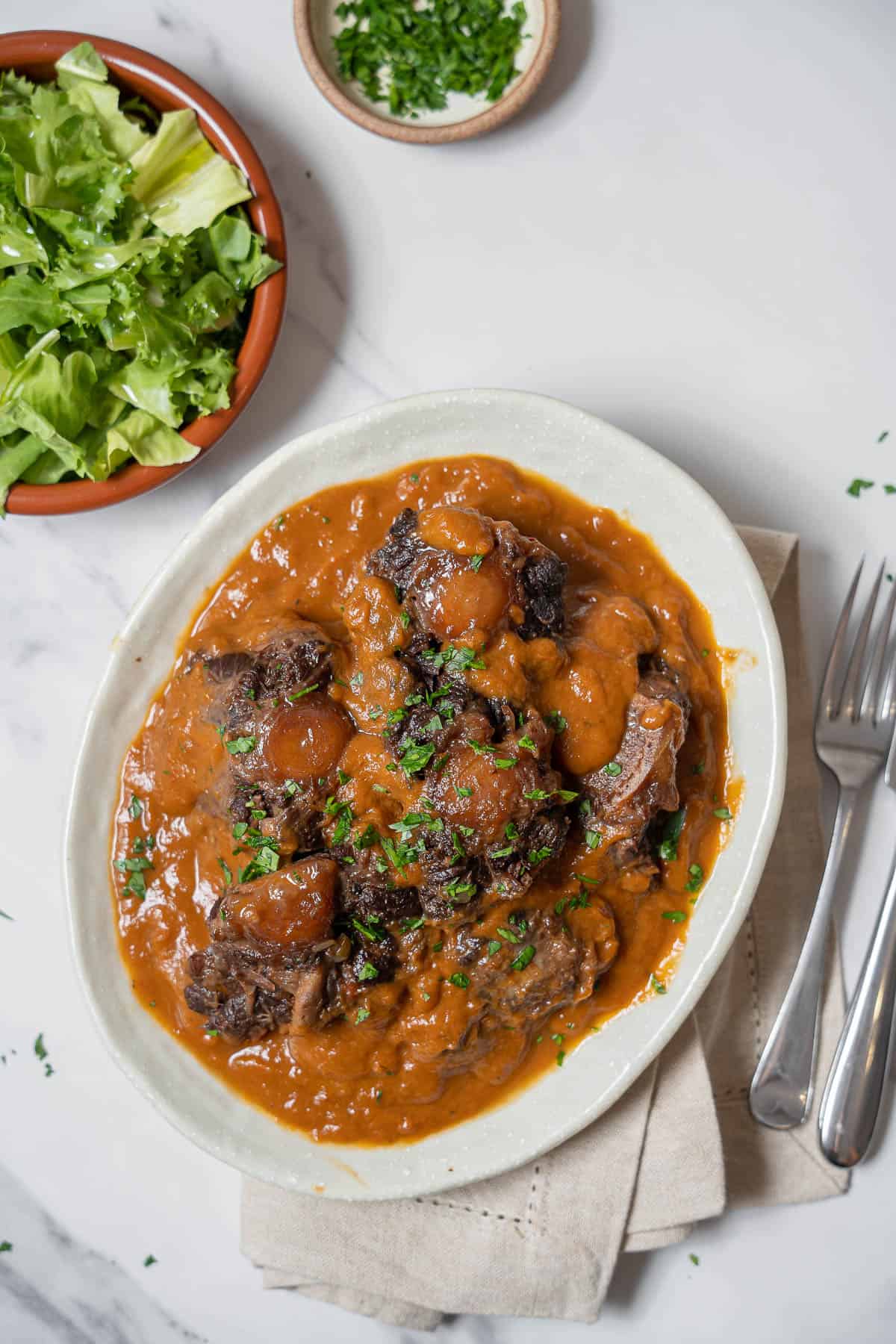
What Is Rabo de Toro?
Spanish bull tail stew (found on most menus as rabo de toro estofado) is one of Spain’s most typical stews.
Although this stew dates back to Roman times, it is actually an Andalusian creation, allegedly inspired in Córdoba. Traditionally made after the bullfights, the dish spread throughout the rest of Spain, and is especially beloved in Madrid, where bullfights are still popular today.
Many bars surrounding the Plaza de Toros (the bullring) in Madrid serve braised bull tail, although they are no longer able to use the tail of the just killed bull. Each restaurant has its own special recipe for Spanish bull tail stew, some using red wine, others opting for Andalusian sherry, or even a bit of brandy.
The bull tail needs to be braised (cooked slowly over low heat) because it is extremely bony, fatty, and tough. But once it cooks long enough, it becomes so tender that it nearly dissolves in your mouth (similar to my Spanish beef stew recipe).
Ingredients
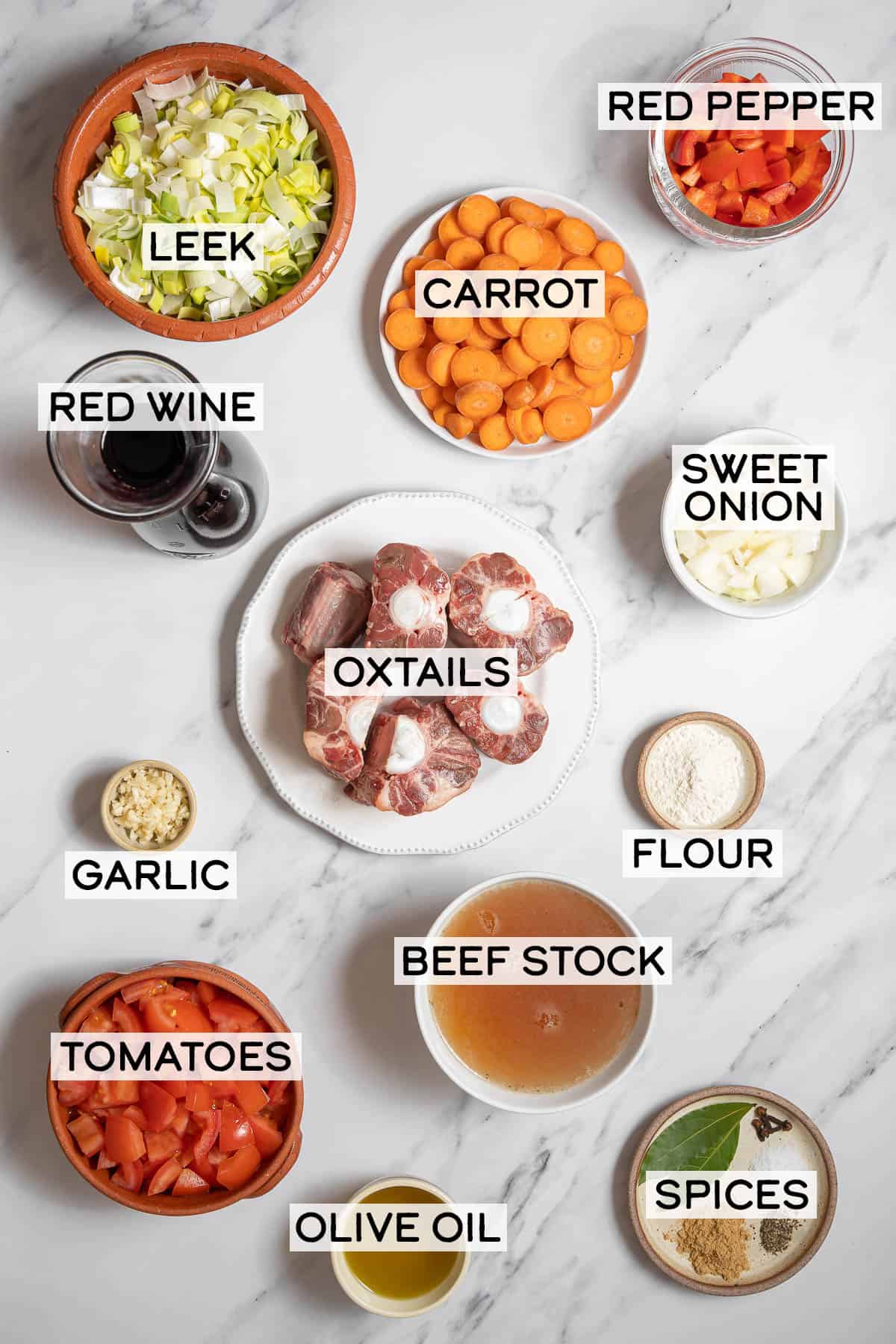
Curious what you need to make rabo de toro? Let’s talk about the most important ingredients in this Spanish bull tail stew.
- Bull Tail/Oxtail: Regardless of whether the tail comes from a bull, cow, or ox, this cut of meat is perfect for stewing. Letting it simmer for a long time will turn this tough cut of meat tender and delicious!
- Flour: Dusting the oxtail with flour will help build a thick and delicious sauce, but you can omit if you prefer without an effect on flavor.
- Wine: Make sure you use decent red wine — nothing fancy, but it should be drinkable. It gives a lot of flavor to the stew!
- Spices: Ginger is not a traditional ingredient, but I love it! Feel free to omit if you prefer. And if you like even more of a spiced flavor, add more cloves.
- Additions: My mother-in-law Antonia sometimes adds mushrooms or pearl onions to this dish after puréeing the sauce.
See recipe card for full information on ingredients and quantities.
Substitutions
- Wine: Antonia sometimes substitutes some of the red wine for sherry or brandy.
- Oxtail: Oxtail can easily be substituted for osso bucco, beef shanks, beef short ribs on the bone, veal neck, and veal shank.
How to Make
If you’d like to see the full ingredients and instructions, scroll to the bottom of the post for the printable recipe card.
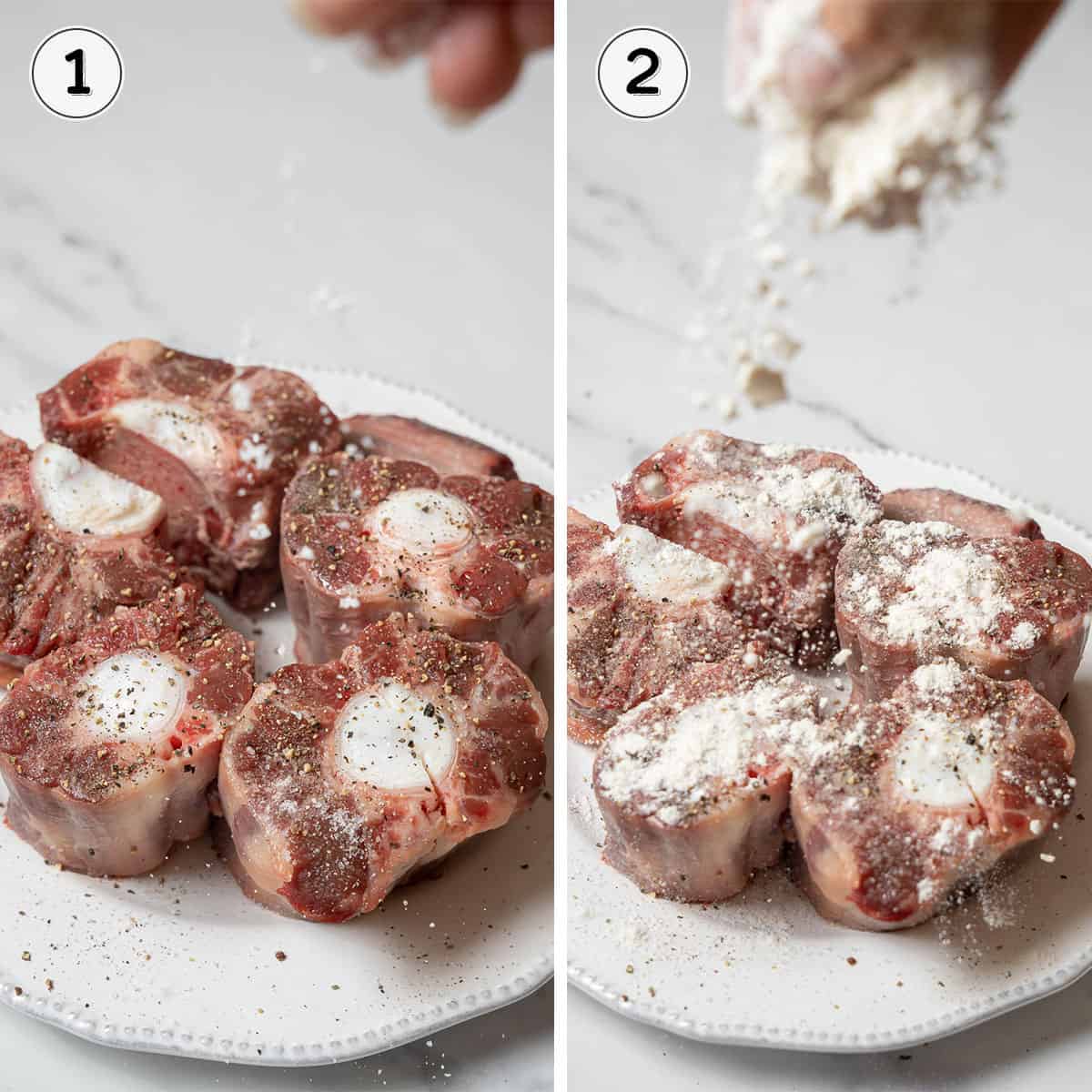
- Season the raw oxtail with plenty of salt and pepper.
- Lightly dust each piece with flour.
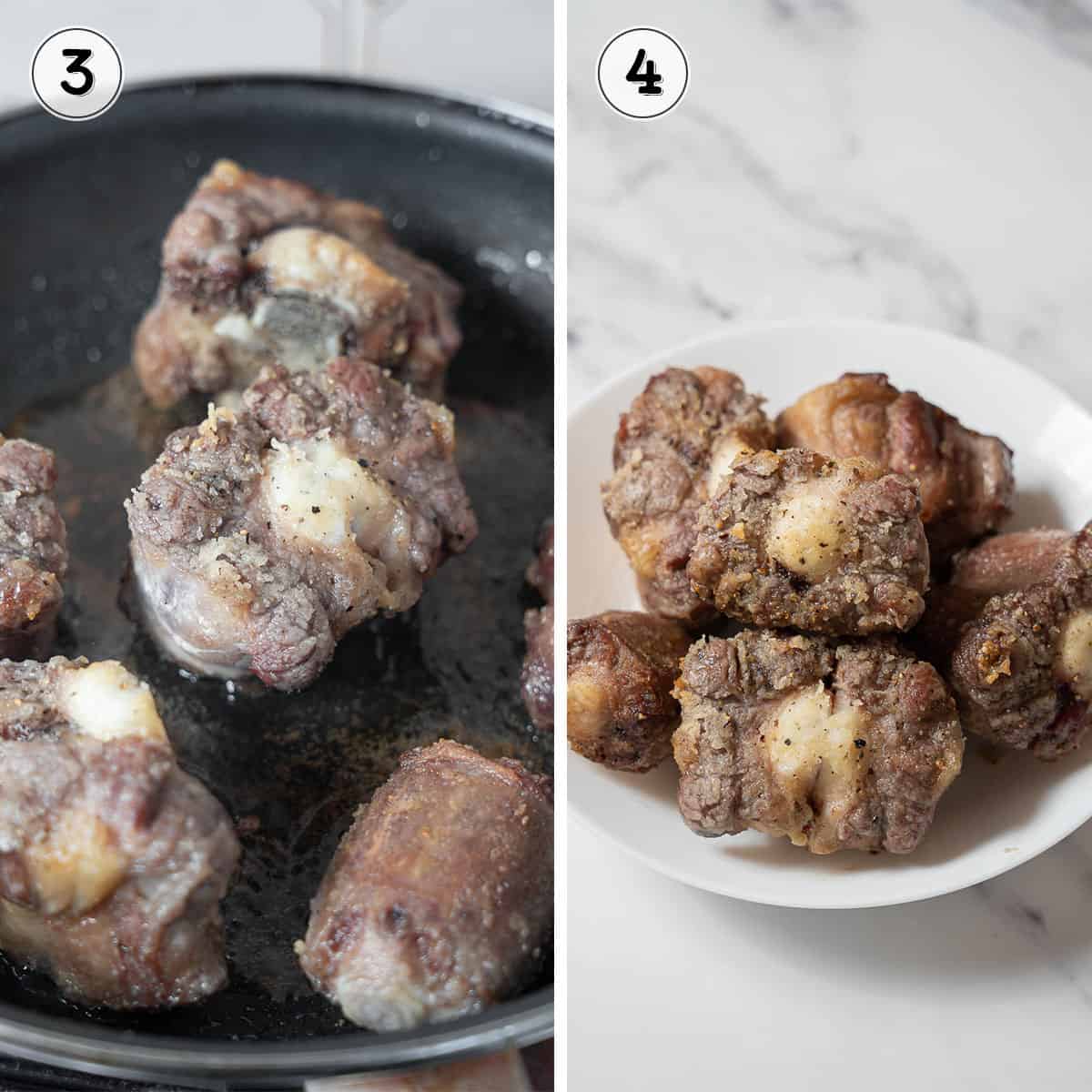
- Sear the oxtail on all sides in a heavy skillet filled with a couple of tablespoons of olive oil.
- Once browned, remove the oxtail and let it rest on a plate.
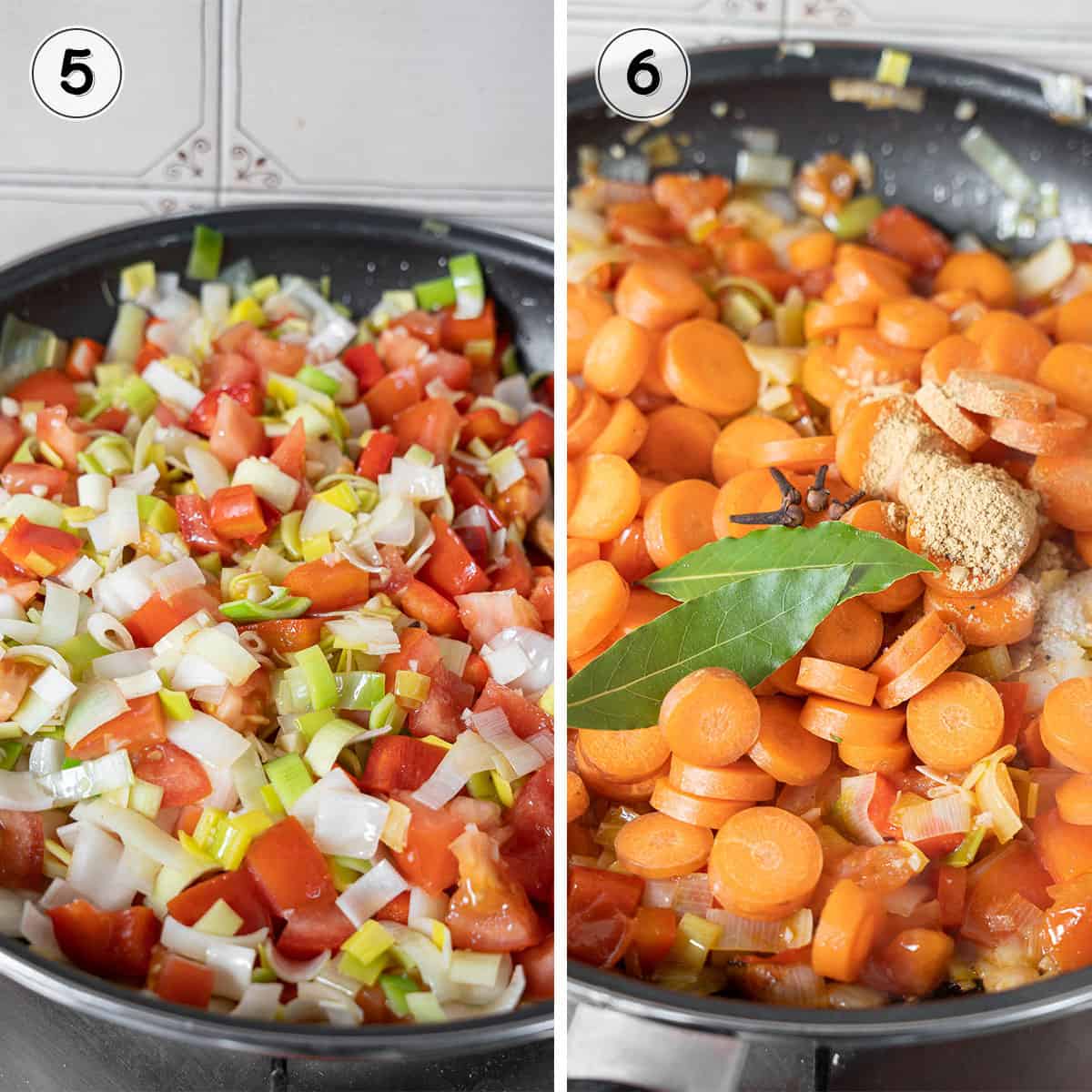
- Sauté the leek, onion, garlic, red pepper, and tomato for about 10 minutes.
- Add the carrot, bay leaves, ginger, and cloves and cook for another 1 minute, stirring constantly.
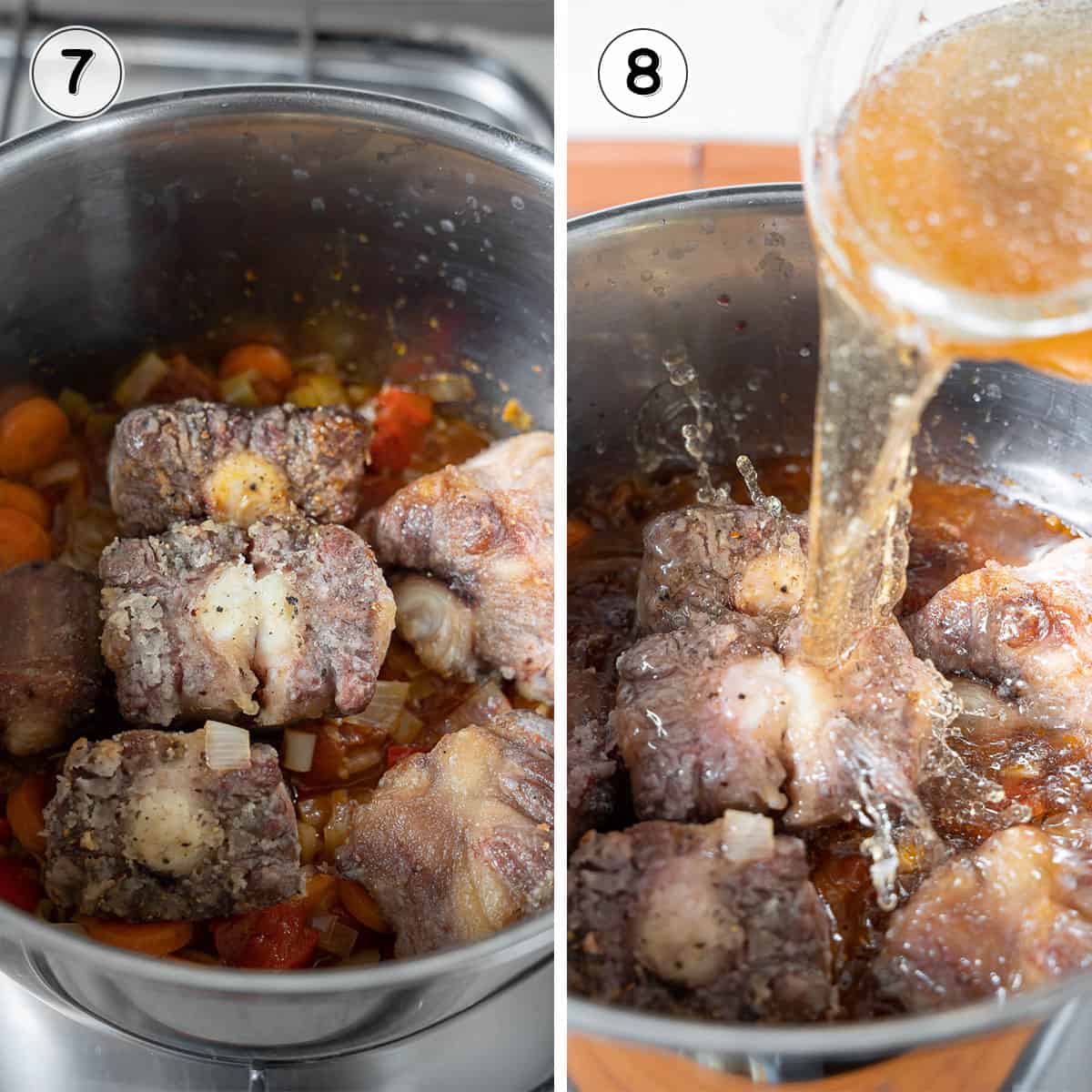
- Add the oxtail back to the pot.
- Cover with the red wine and stock, adding a bit more stock if necessary.
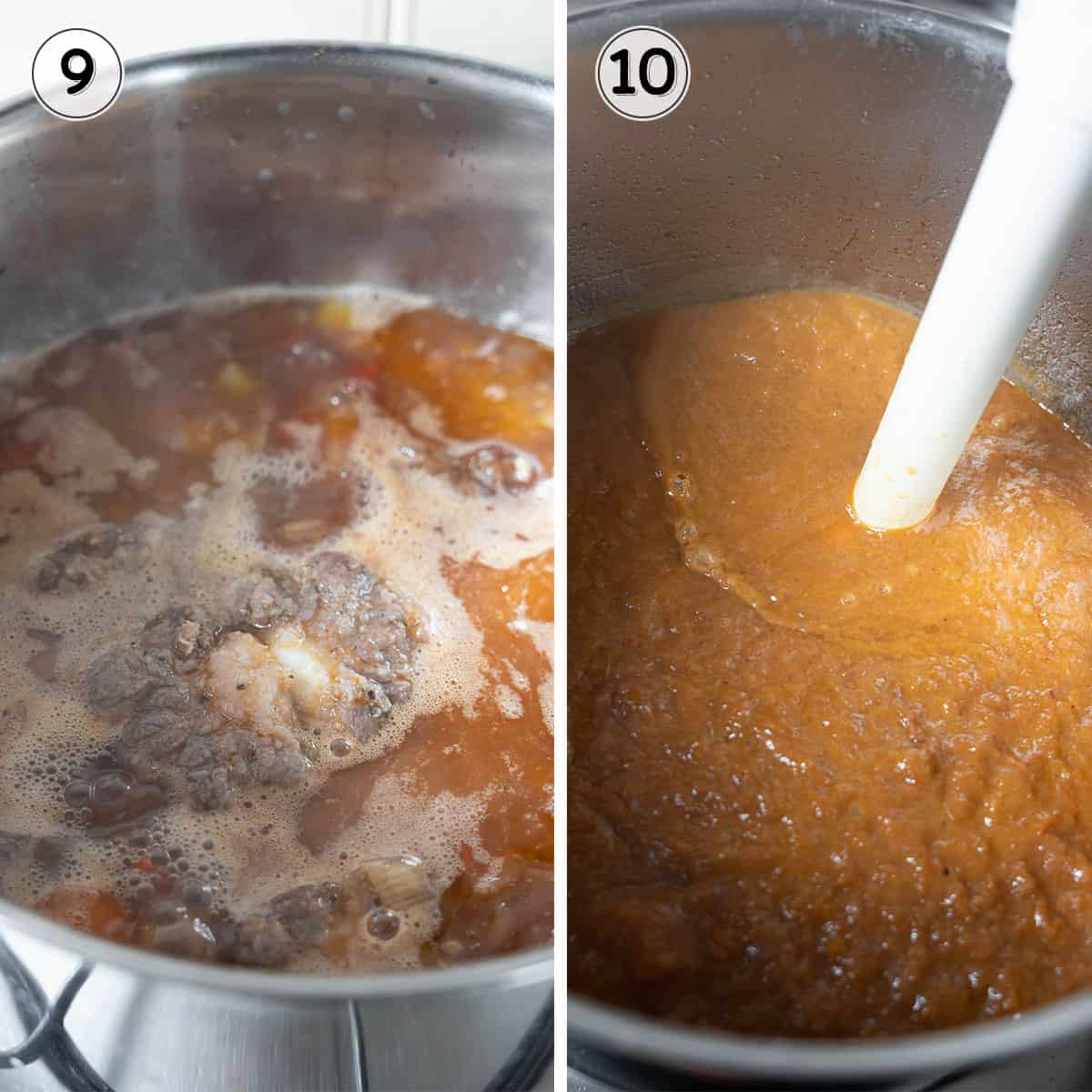
- Bring everything to a boil, and then lower the heat and simmer covered for 3-4 hours. You’ll know it’s finished when the sauce has reduced, and the oxtail is super tender. It should be falling off the bone!
- Take the oxtail, bay leaves, and cloves out of the pot and purée the sauce.
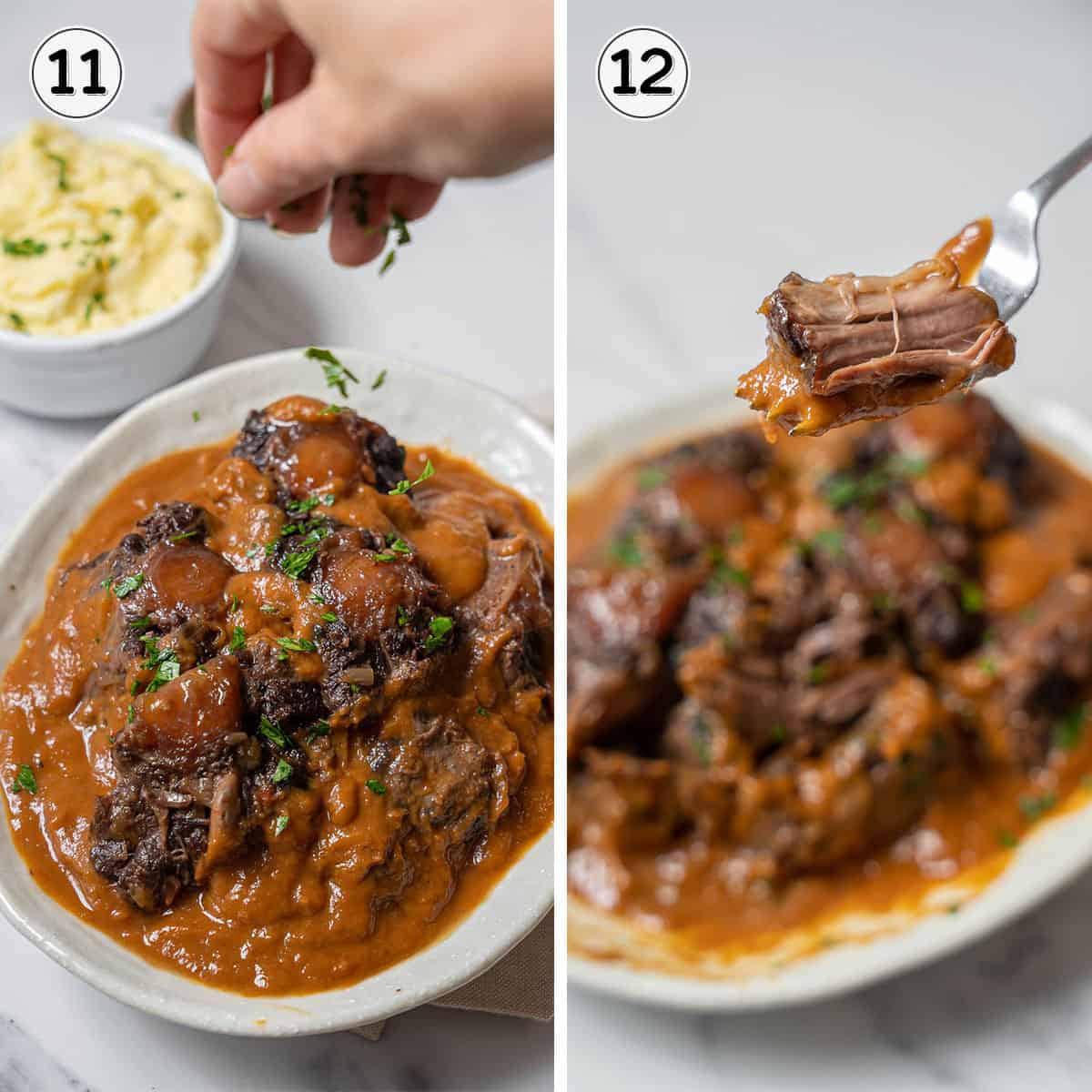
- Add the oxtail back to the puréed sauce and heat through. Ideally, enjoy this the next day once the flavors have had a chance to develop even more.
- When you’re ready to serve the stew, enjoy it with potatoes or rice.
Recipe FAQs
Oxtail currently comes from a cow (it is cow’s tail). In the past, it was the tail of an ox but today we use the term oxtail to mean cow’s tail.
Today rabo de toro (oxtail) is considered a delicacy in Spain. It used to be a cheap cut of meat, but nowadays can be quite expensive. It is served at many fine dining restaurants, but also at traditional taverns.
The rule is usually about 1lb. (half a kilo) of oxtail per serving. Remember that much of the oxtail is bone and fat, so you need a bit more than with other cuts of meat.
Oxtail is a very tough cut of meat, which is why it is best for stewing. When stewed for many hours the tough tissues break down and the meat becomes tender and delicious.
Serve
Rabo de toro is traditionally served with homemade french fries at most casual restaurants. You’ll also find it served over delicious mashed potatoes (like my Manchego mashed potatoes). It would be perfect served with rice, too.
Because this is such a rich dish, I would recommend pairing a crisp salad or green vegetable with it on the side. In Spain, we don’t usually serve anything as a side (apart from the potatoes!), but I always make a simple salad, sautéed spinach, or roasted asparagus.
Lastly — the wine! This is a rich, hearty dish, so it’s perfect paired with a very full-bodied wine. You could serve a Spanish Rioja or Ribera del Duero, or even a Toro or more modern Andalusian red wine.
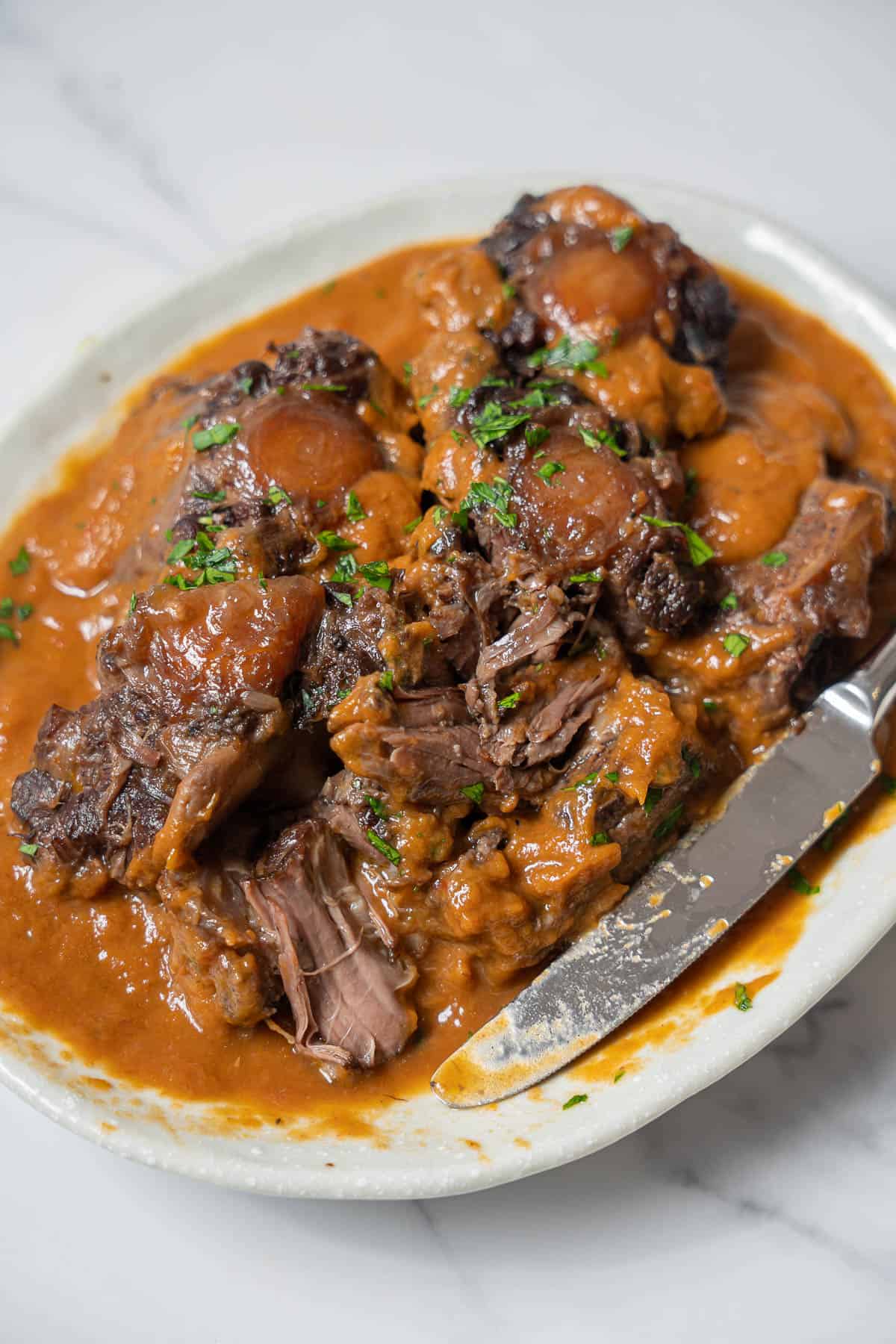
Expert Tips
- Time is your friend. It might need more than three hours if the meat is tough. It should be tender and falling off the bone when finished, so keep going if in doubt!
- You can use a pressure cooker if you prefer; just adjust the time.
- I recommend puréeing the sauce if you can. It will give you a gorgeous thick gravy that is perfect with this dish.
- Like any great stew, it will taste better the day after you make it. If you have time, wait until the next day to have it, or at least make enough to enjoy leftovers.
More Simple Spanish Stews
If you liked this recipe, please share it with others!
Follow Spanish Sabores on Facebook, Twitter, Pinterest, and Instagram for more recipes and travel tips.
If you’ve made and enjoyed this recipe, please leave a 5-star review!
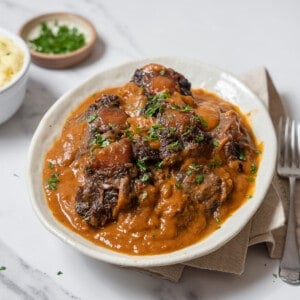
Spanish Bull Tail Stew (Rabo de Toro)
Spanish bull tail stew (also known as rabo de toro estofado or oxtail stew) is one of Spain’s most typical dishes. Dating back to Roman times, rabo de toro is a delicious slow cooked meal worth trying!
Print (images optional)
Pin
Rate
Servings: 4 servings
Calories: 1184.29kcal
Instructions
-
Season the bull tail generously with salt and pepper, then lightly dust the meat with flour, shaking off the excess.
-
Heat a splash of olive oil in a large, heavy pot over medium high heat, about 2 minutes. Sear each bull tail in the hot oil until nicely browned, about 30 seconds per side, then remove the pieces and let them rest on a plate.
-
Sauté the leek, onion, garlic, red pepper, and tomato using the leftover oil until the vegetables are softened and lightly caramelized, about 10 minutes.
-
Add the carrots, bay leaves, ginger, and cloves and cook for 1 minute, stirring constantly.
-
Add the bull tail back to the pan and cover completely with the wine and stock, then bring to a boil. Reduce the heat to a simmer, cover, and simmer for 3-4 hours. It’s done when the meat is falling away from the bone. It may need the full 4 hours or longer if the meat is very tough.
-
Once the meat is tender, remove it and purée the sauce with an immersion blender. (This is optional, but does make the gravy extra thick.)
-
Spoon the puréed sauce over the rabo de toro. Serve it hot with homemade french fries or mashed potatoes for an authentic Spanish meal.
Notes
- Time is your friend, it might need more than three hours. It should be tender and falling off the bone when finished. Keep going if in doubt!
- You can use a pressure cooker if you prefer, just adjust the time.
- Some people don’t purée the sauce, but I would really recommend it. It will give you a gorgeous thick gravy that is perfect with this dish.
- Like any great stew, it will taste better the day after you make it. If you have time, wait until the next day to have it, or at least make enough to enjoy leftovers.
Nutrition
Calories: 1184.29kcal | Carbohydrates: 31.76g | Protein: 110.82g | Fat: 52.72g | Saturated Fat: 19.1g | Polyunsaturated Fat: 2.48g | Monounsaturated Fat: 26.2g | Cholesterol: 374.21mg | Sodium: 1243.93mg | Potassium: 976.8mg | Fiber: 4.27g | Sugar: 11.89g | Vitamin A: 9467.3IU | Vitamin C: 56.81mg | Calcium: 155.26mg | Iron: 16.36mg
[ad_2]
Source link